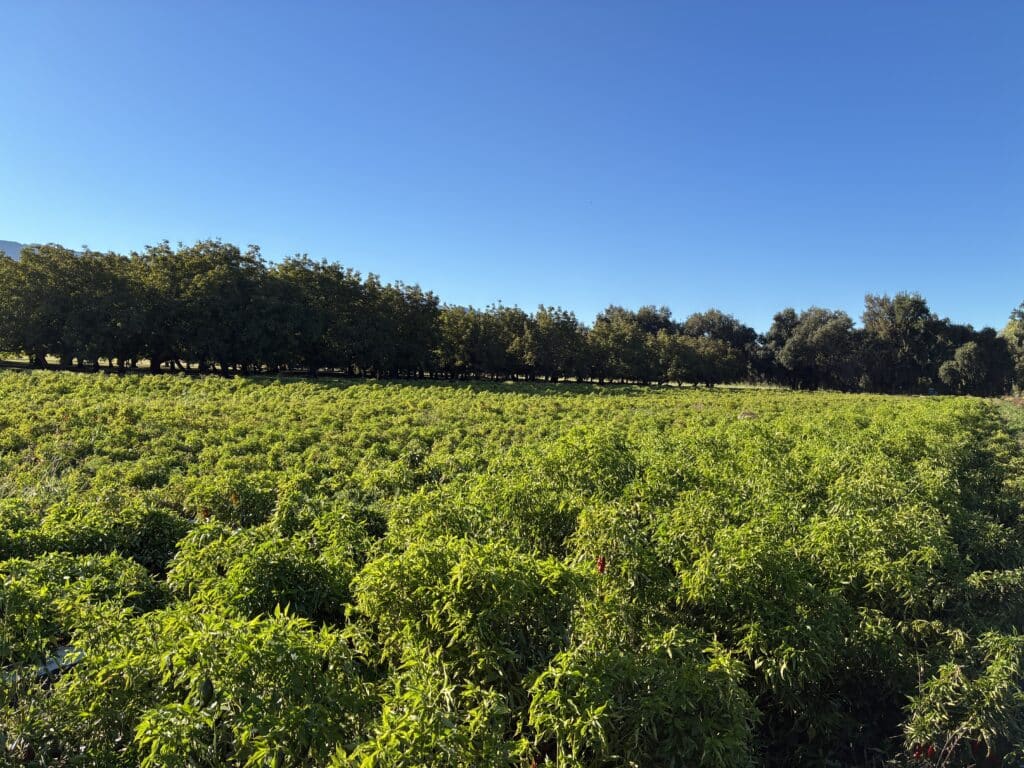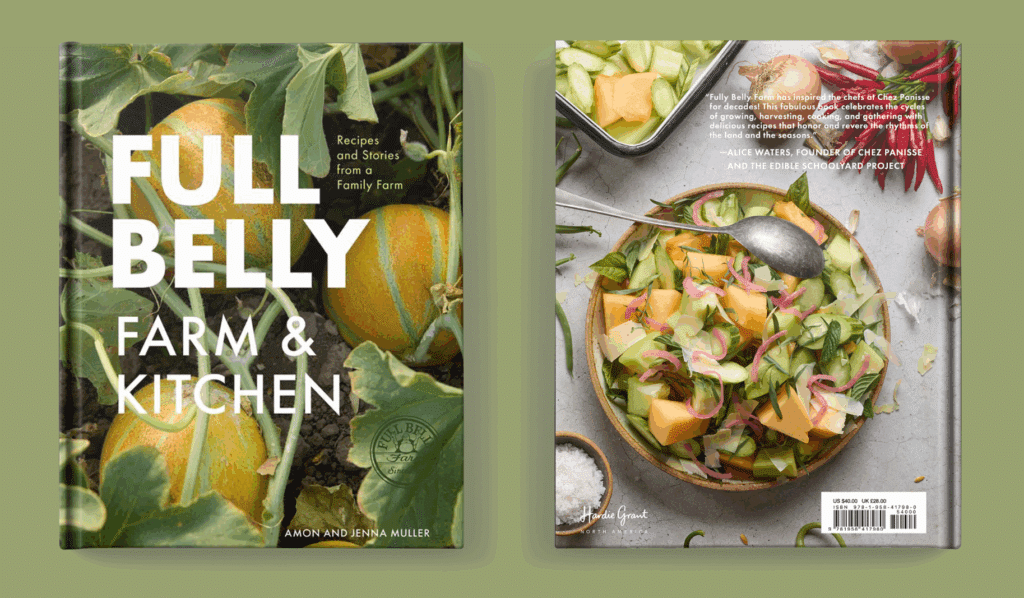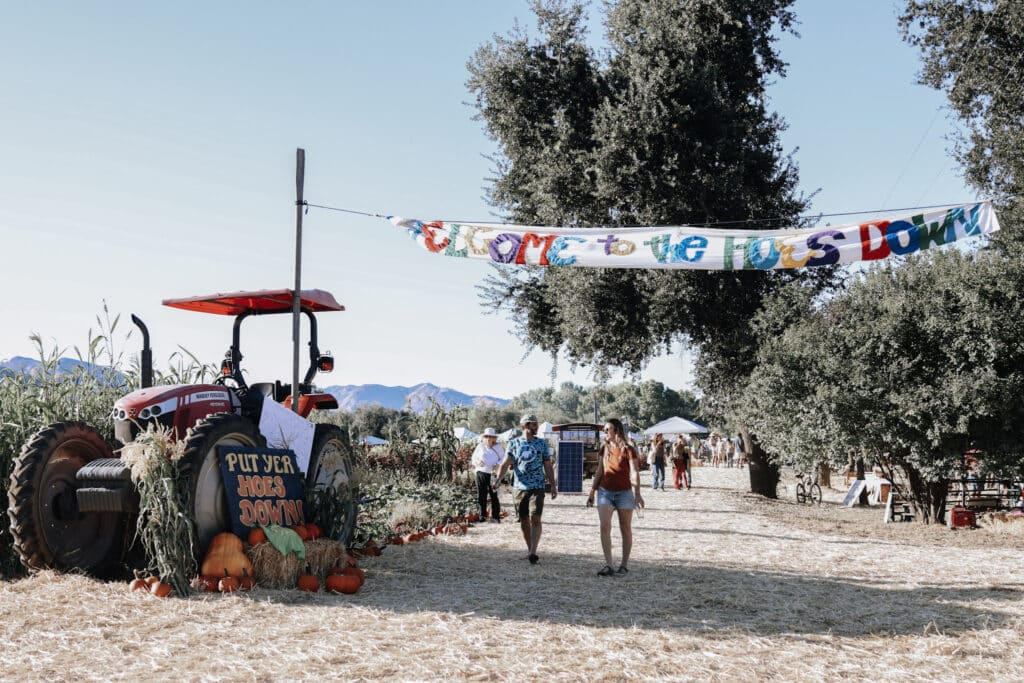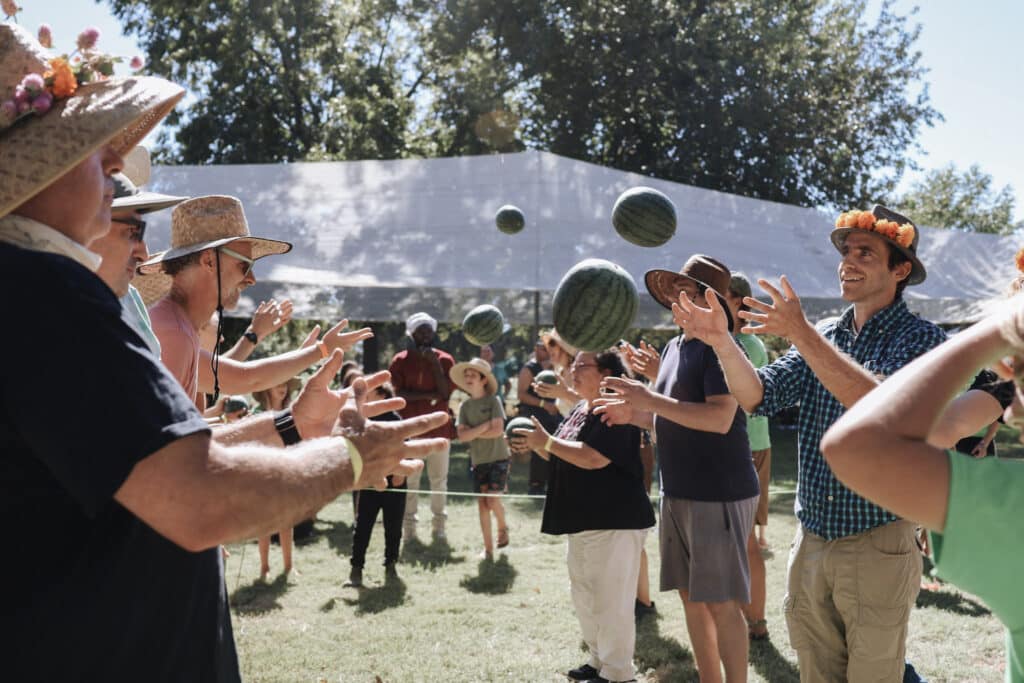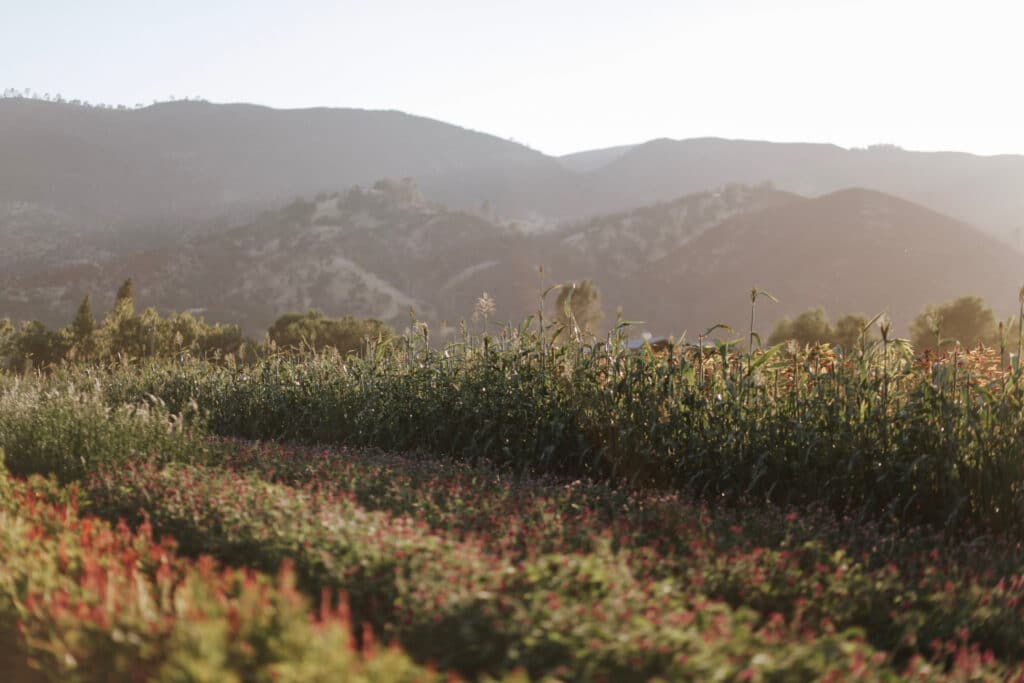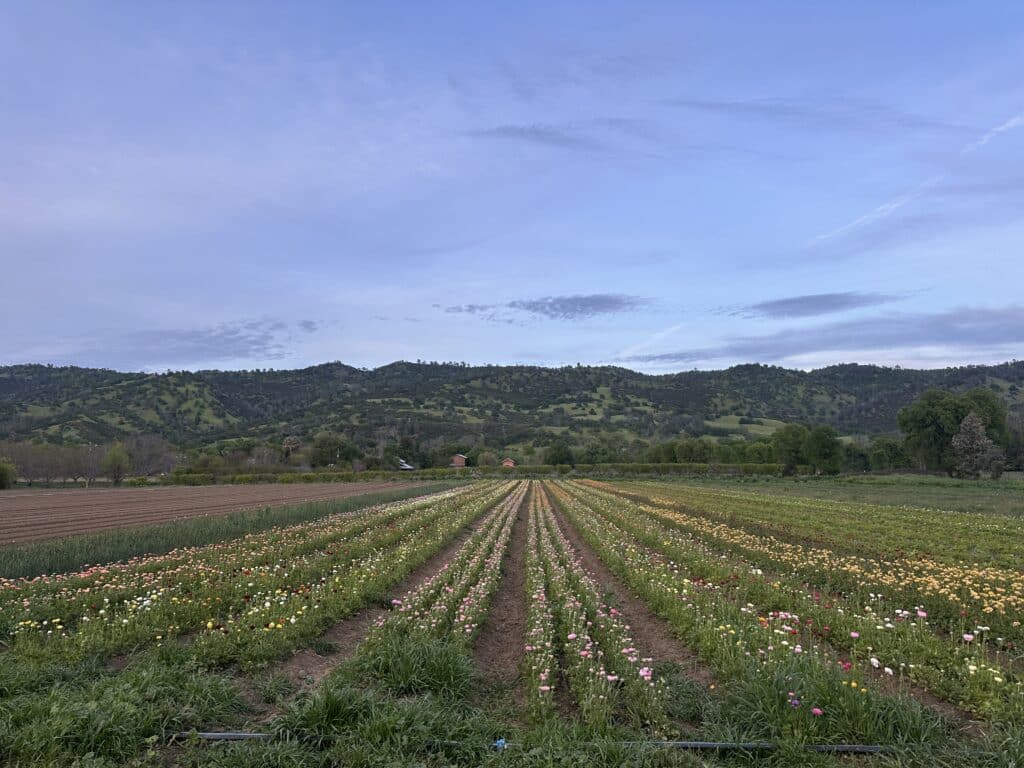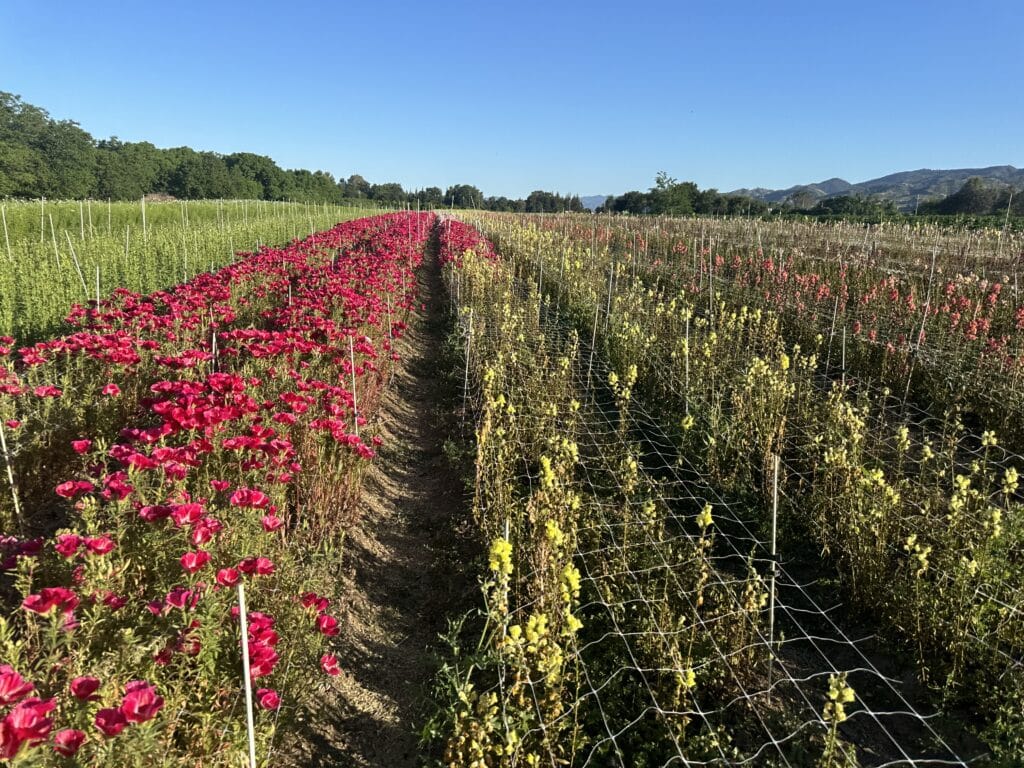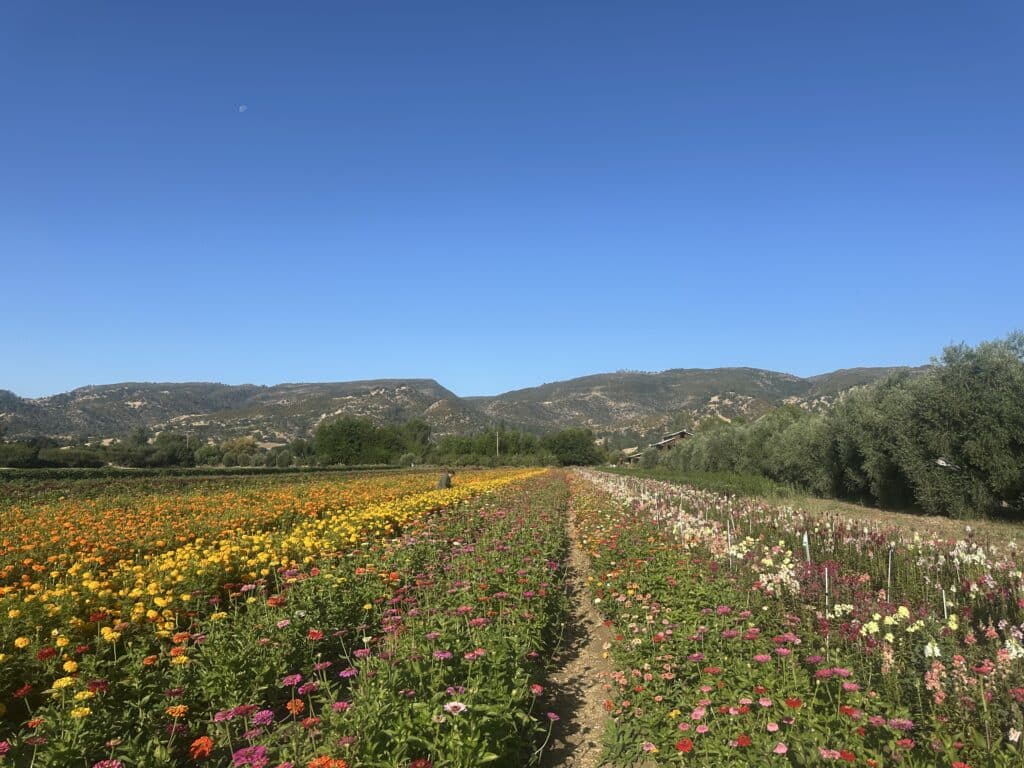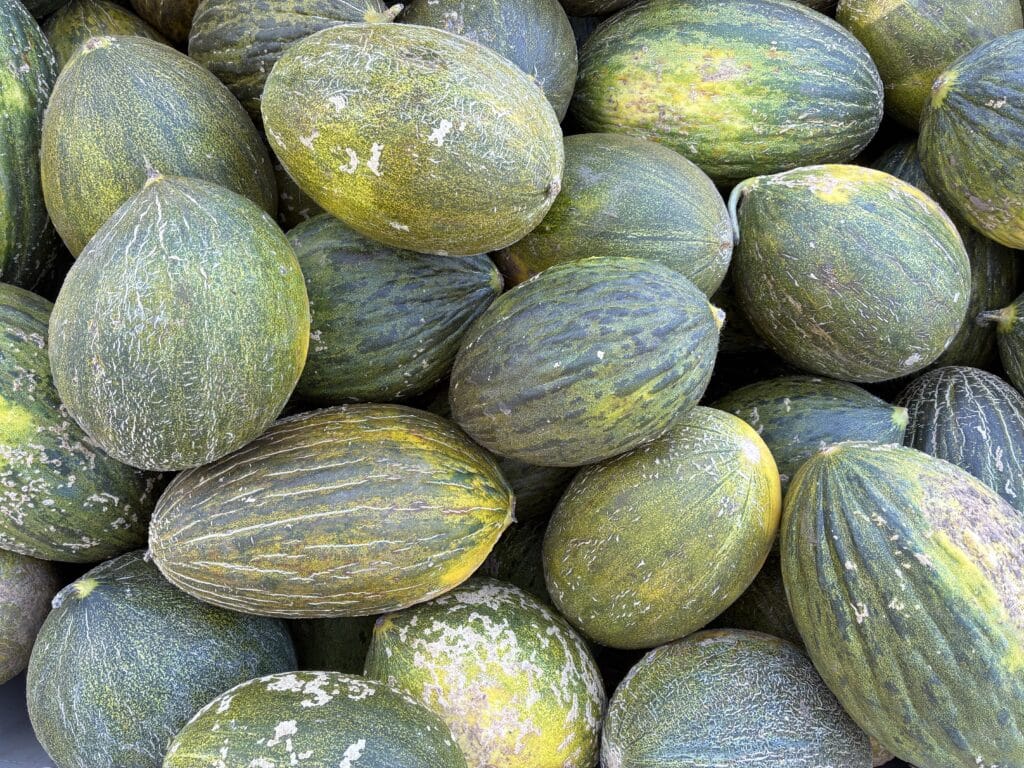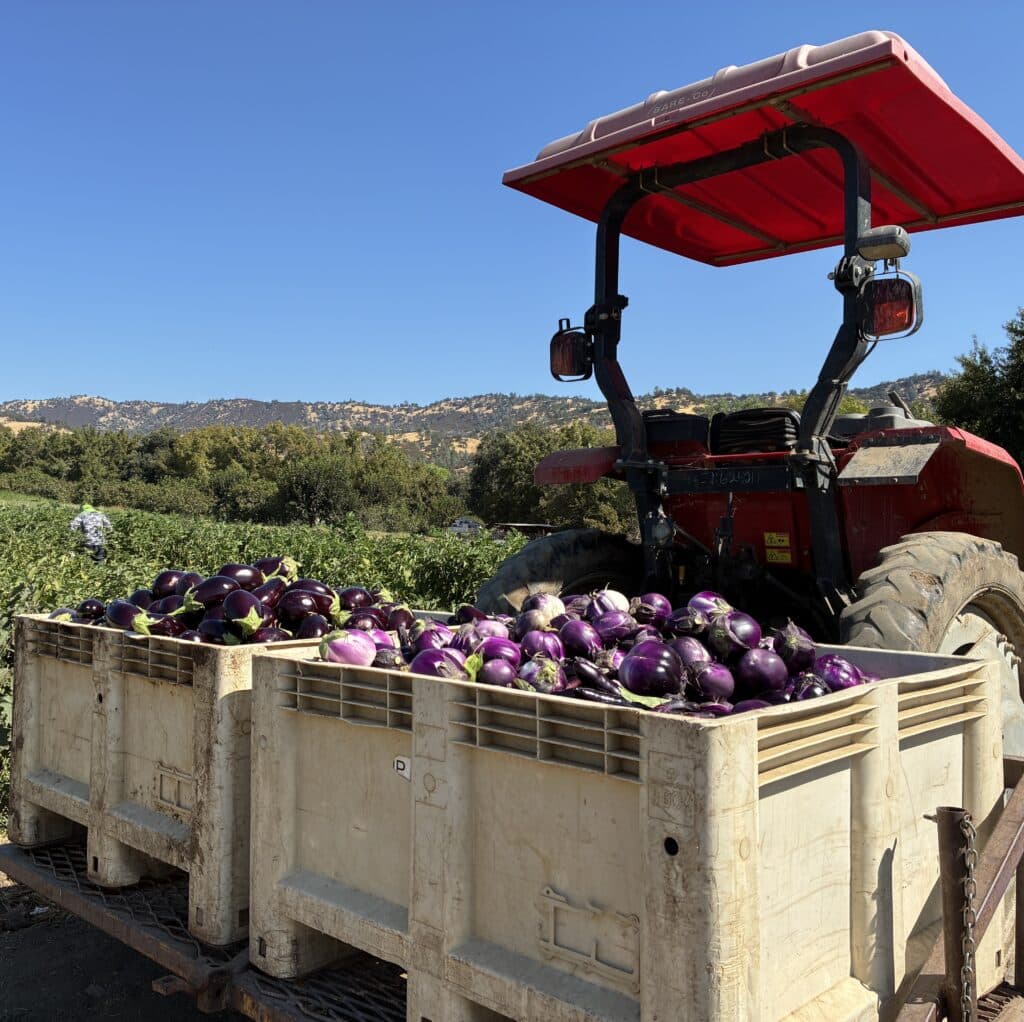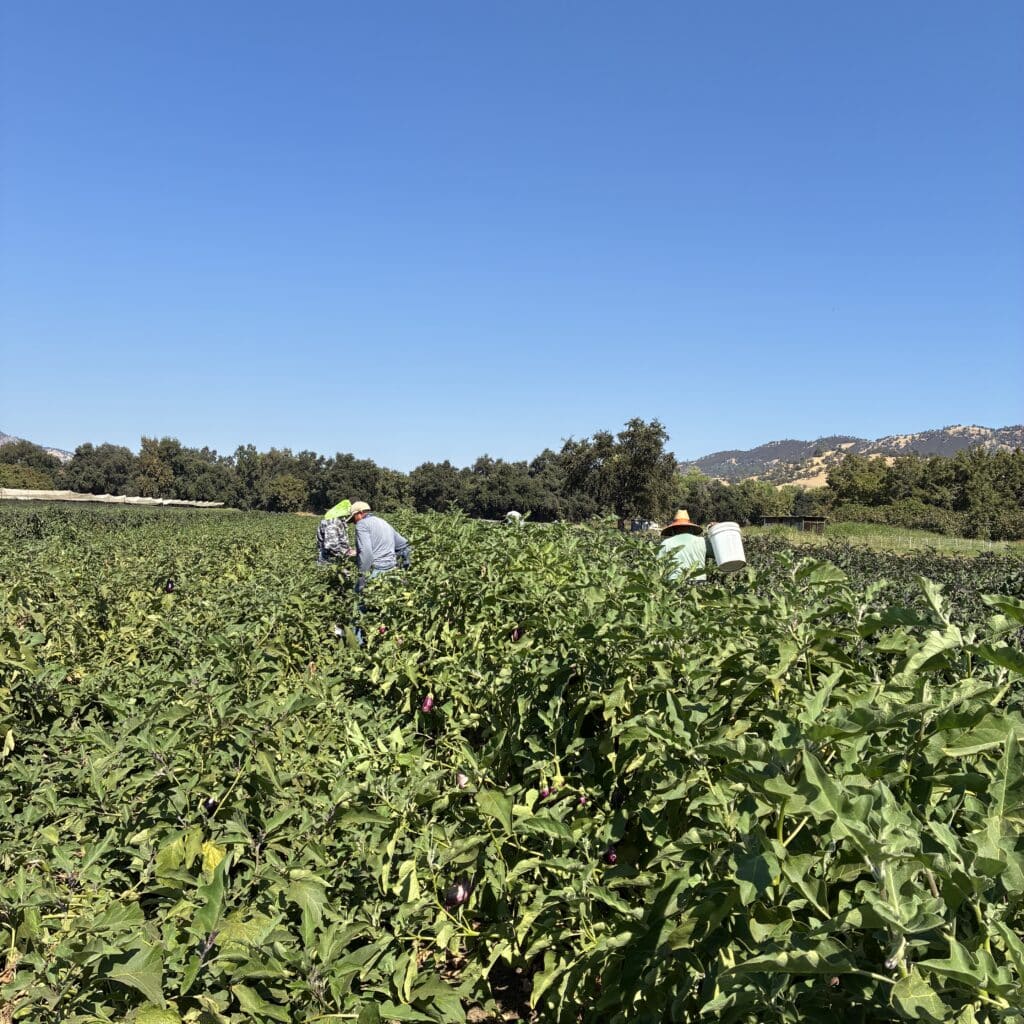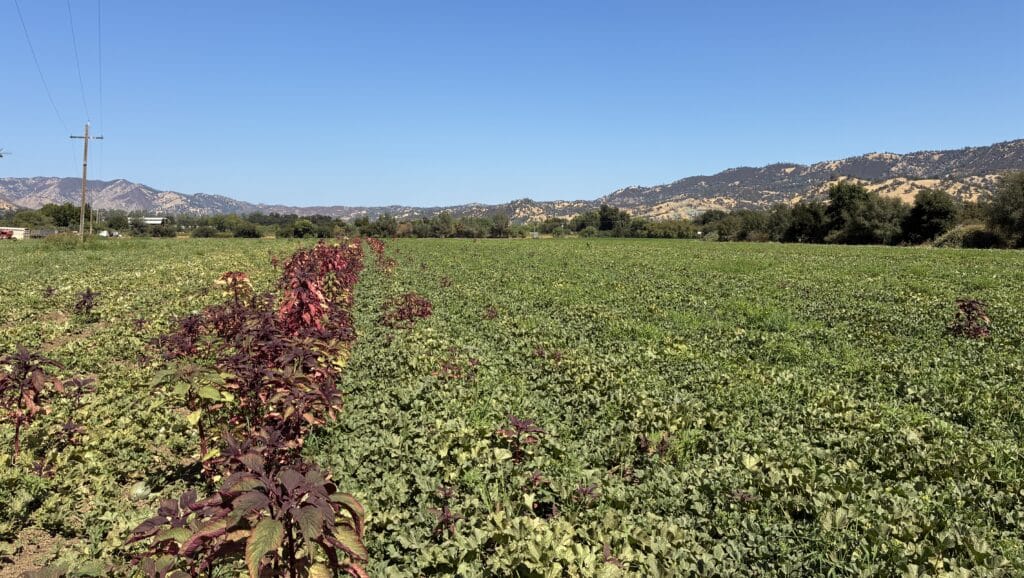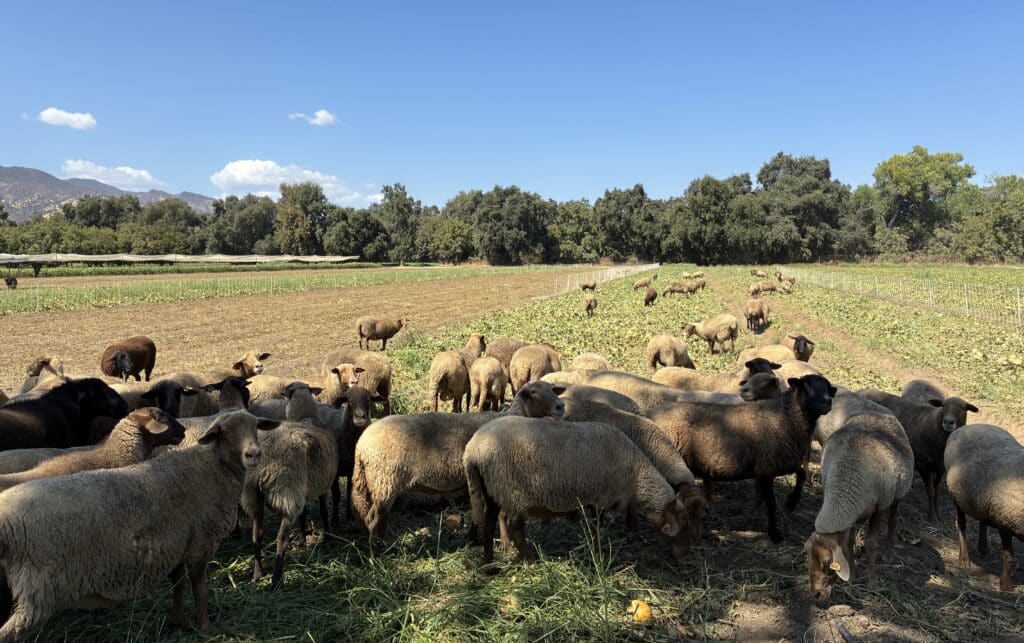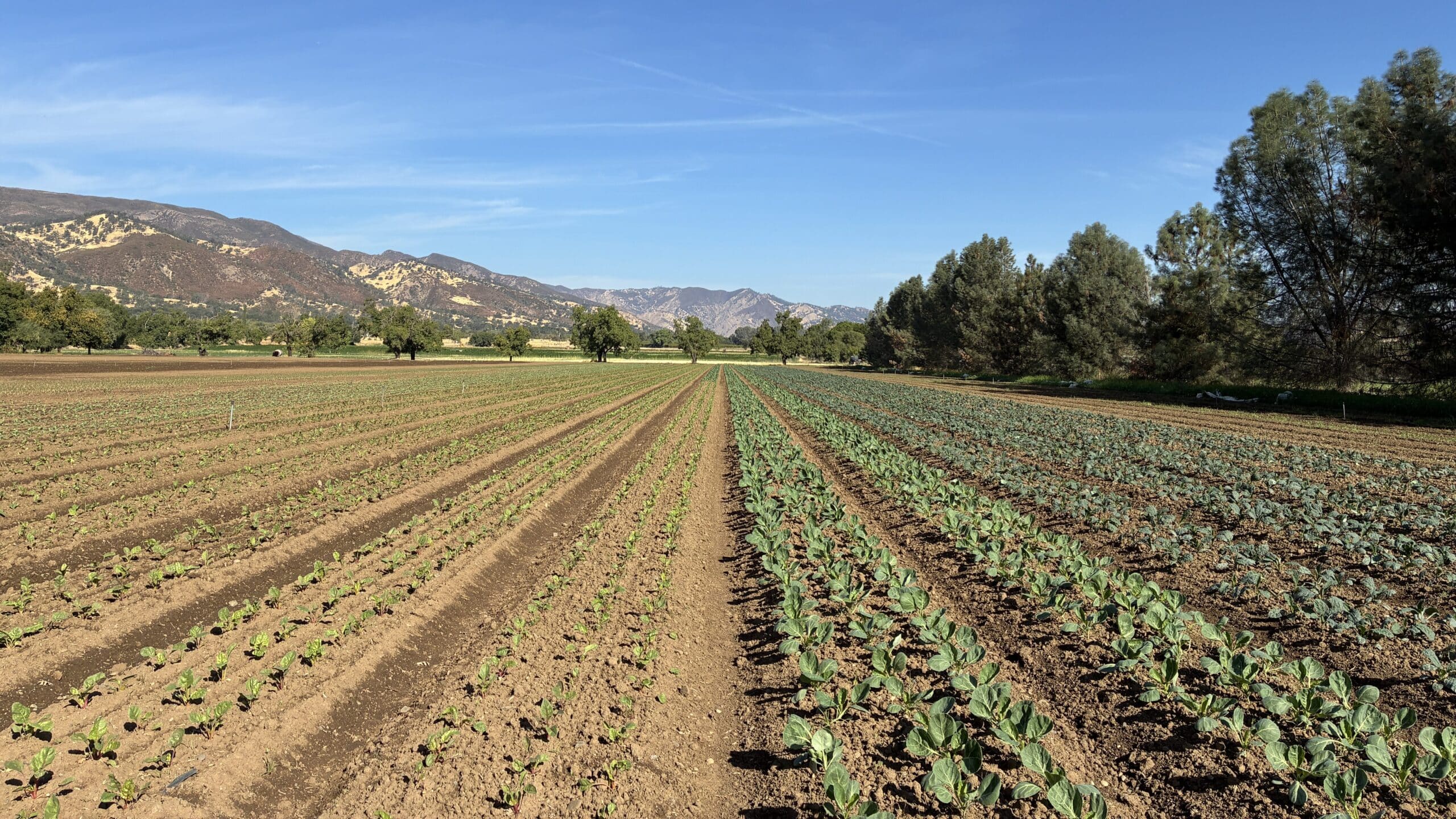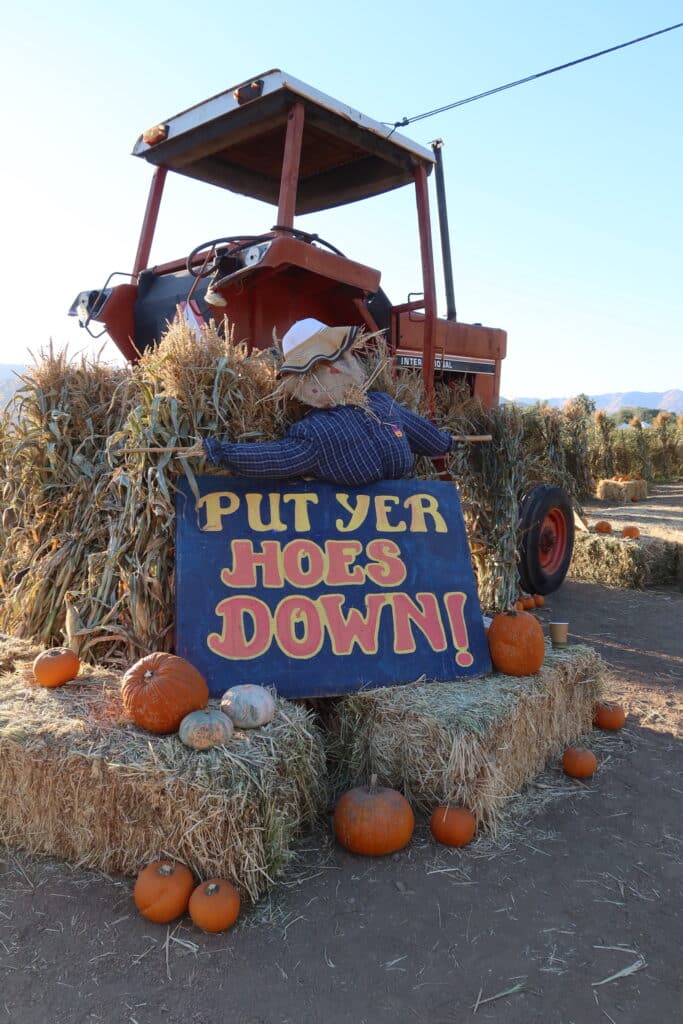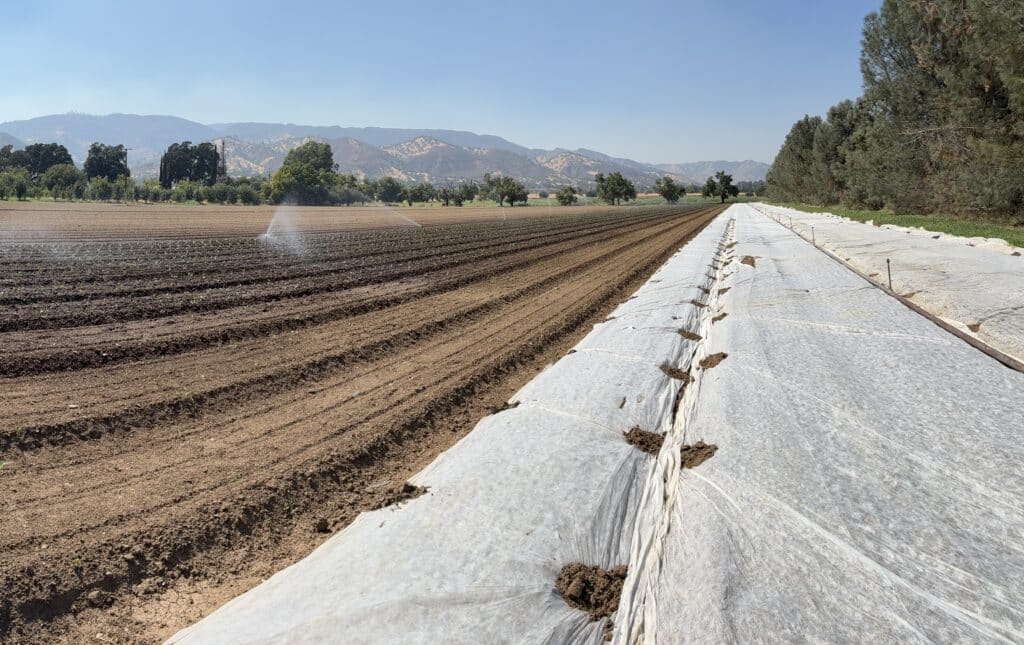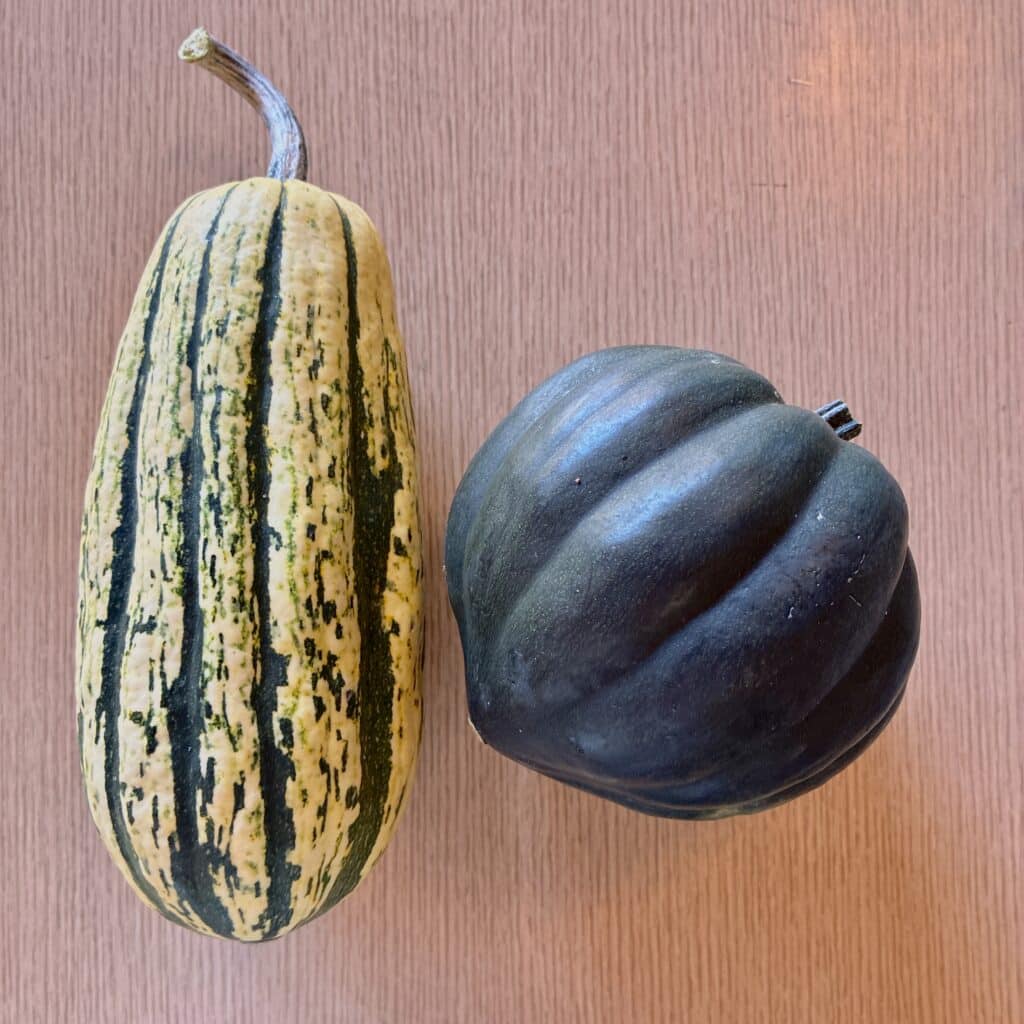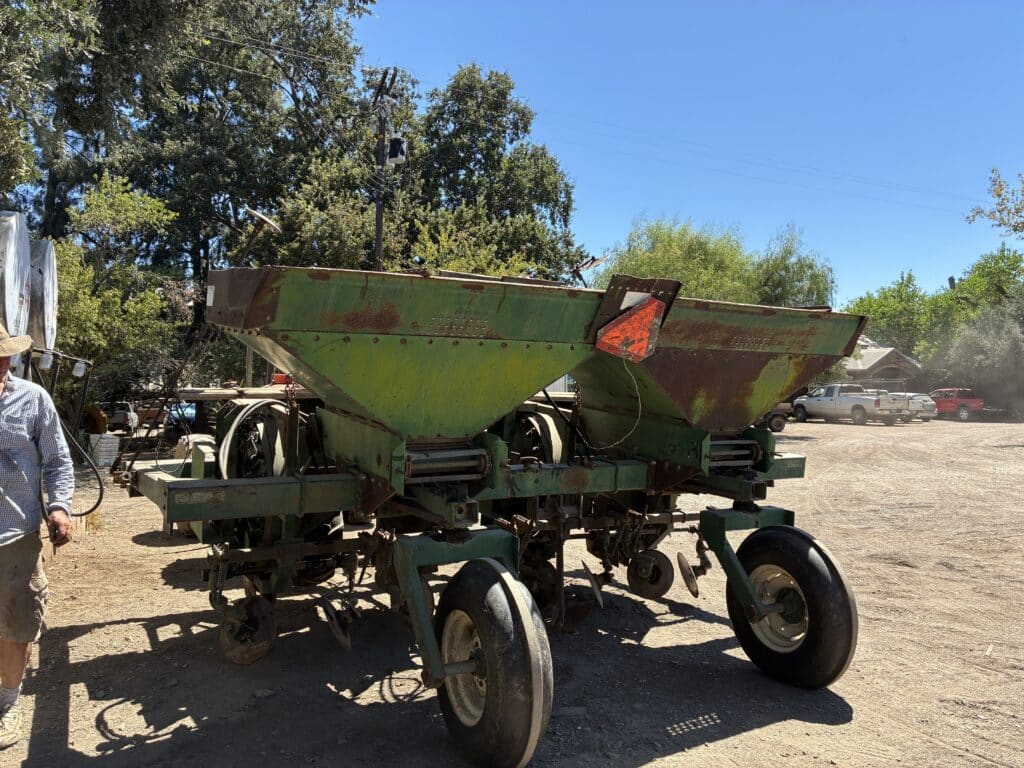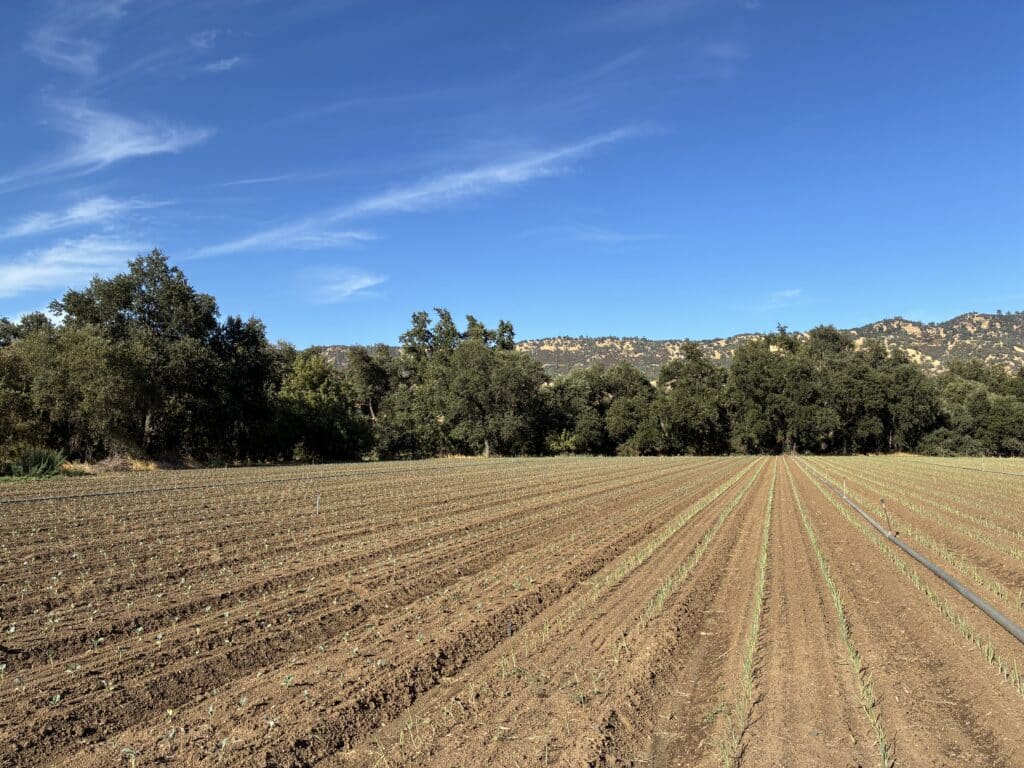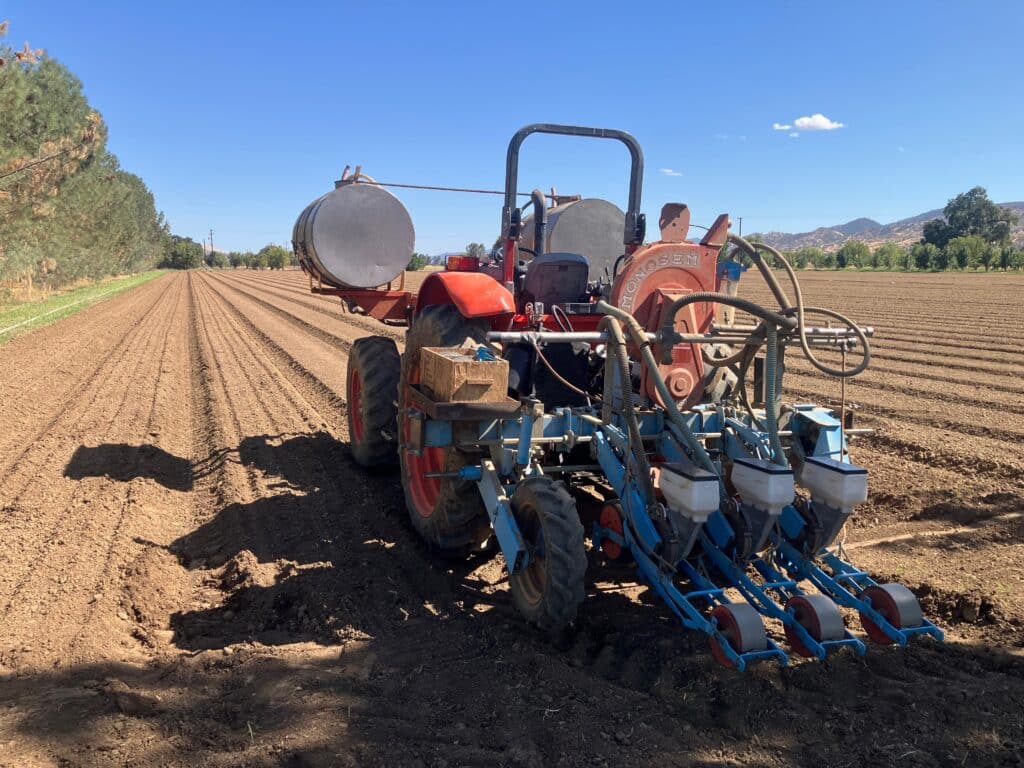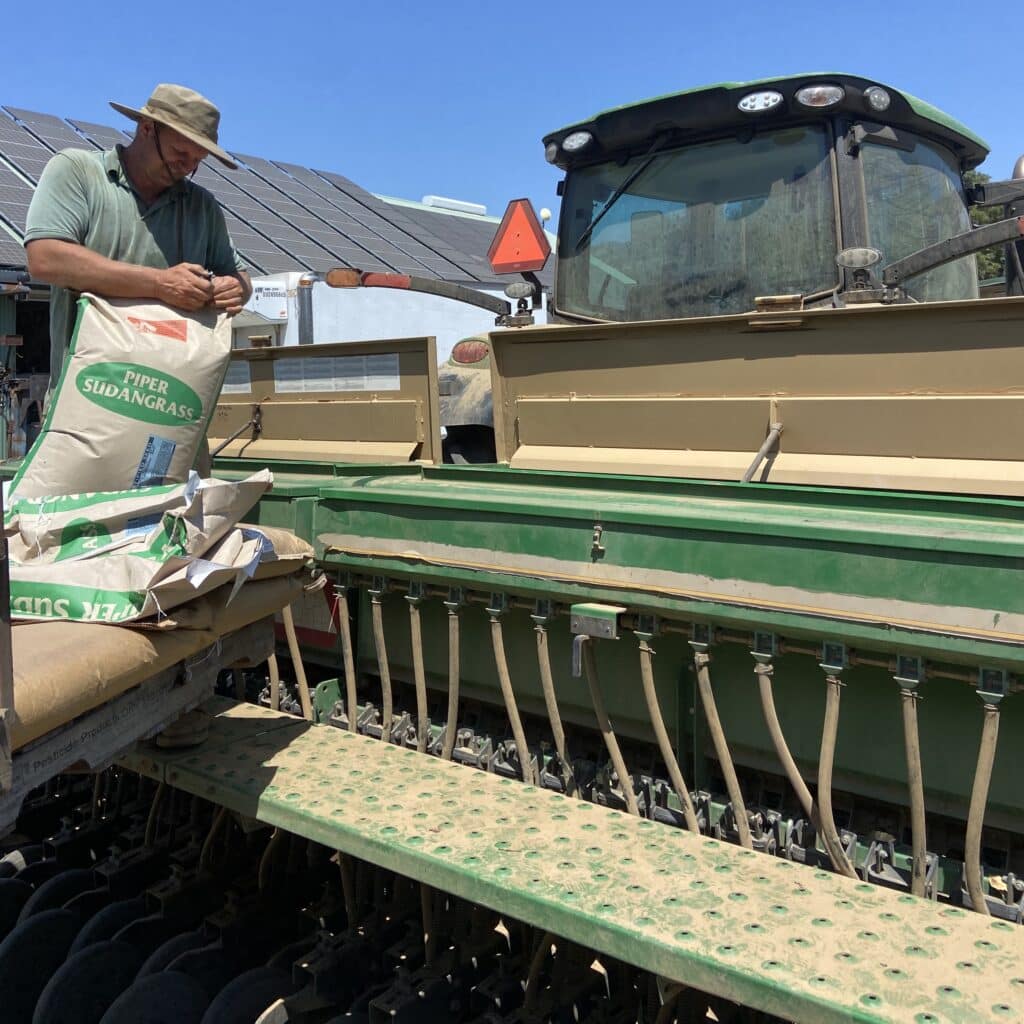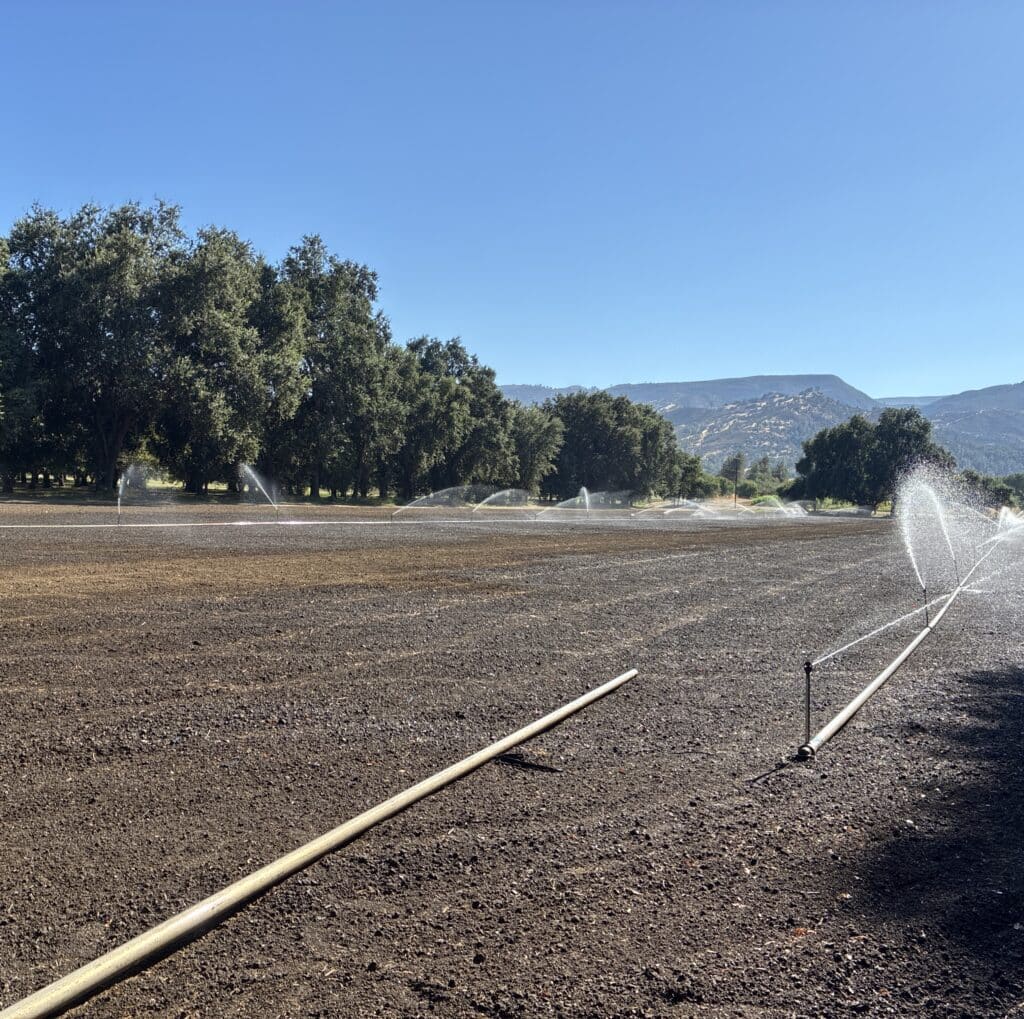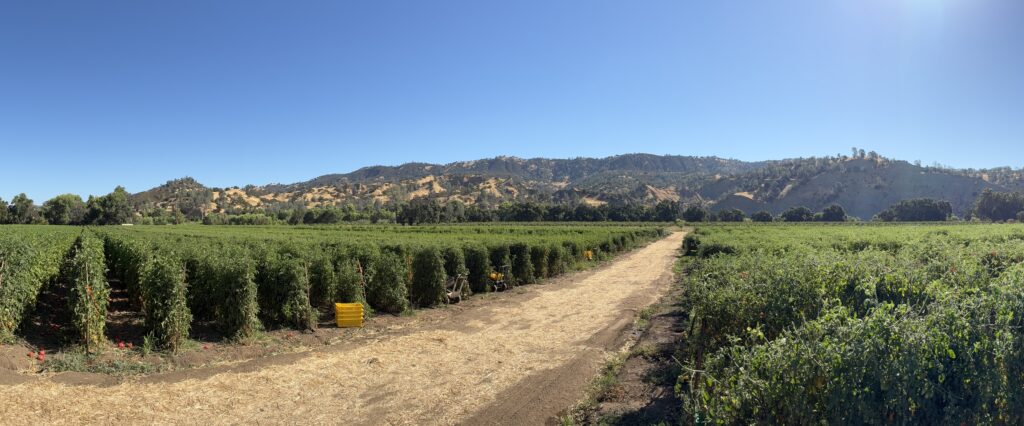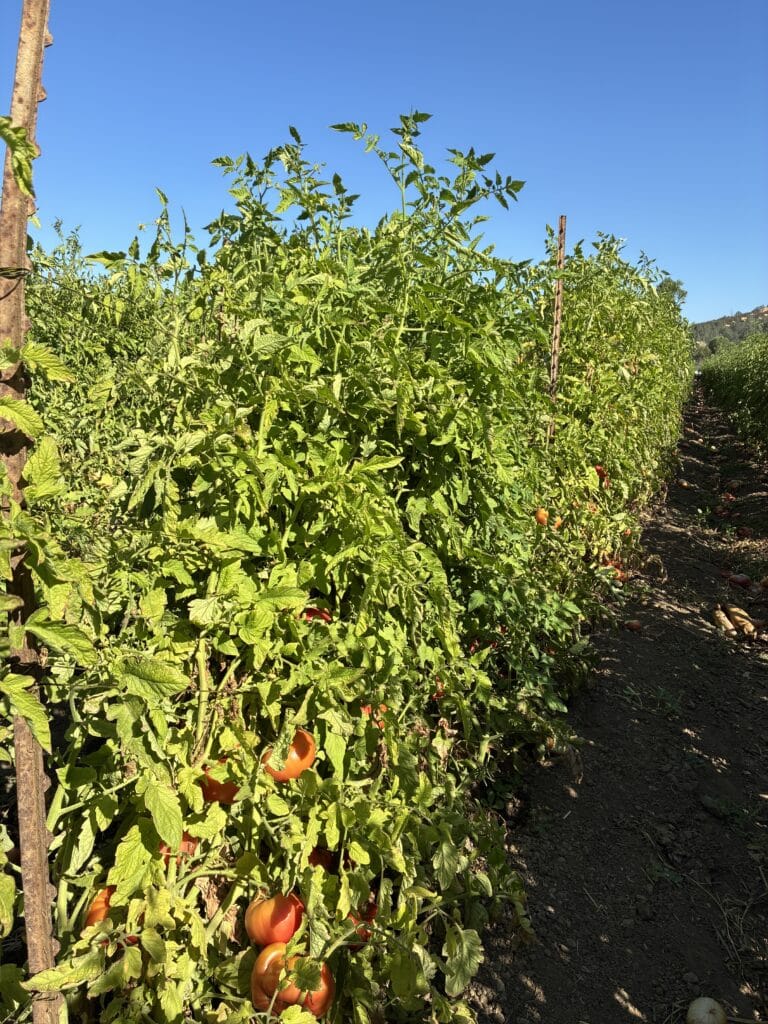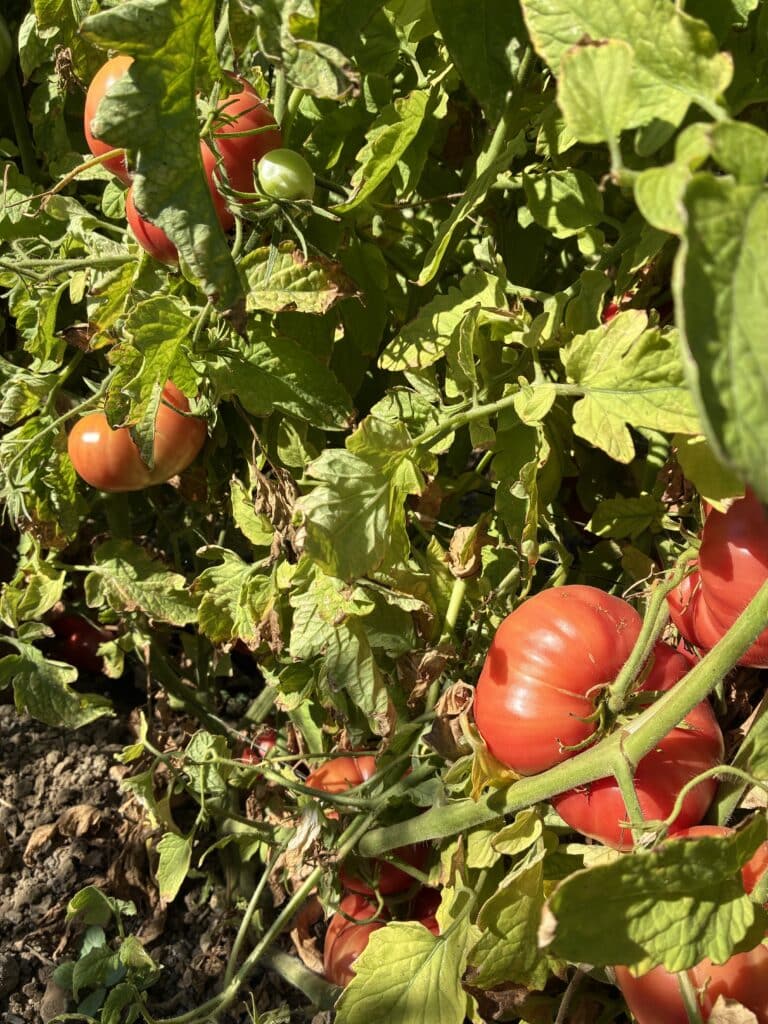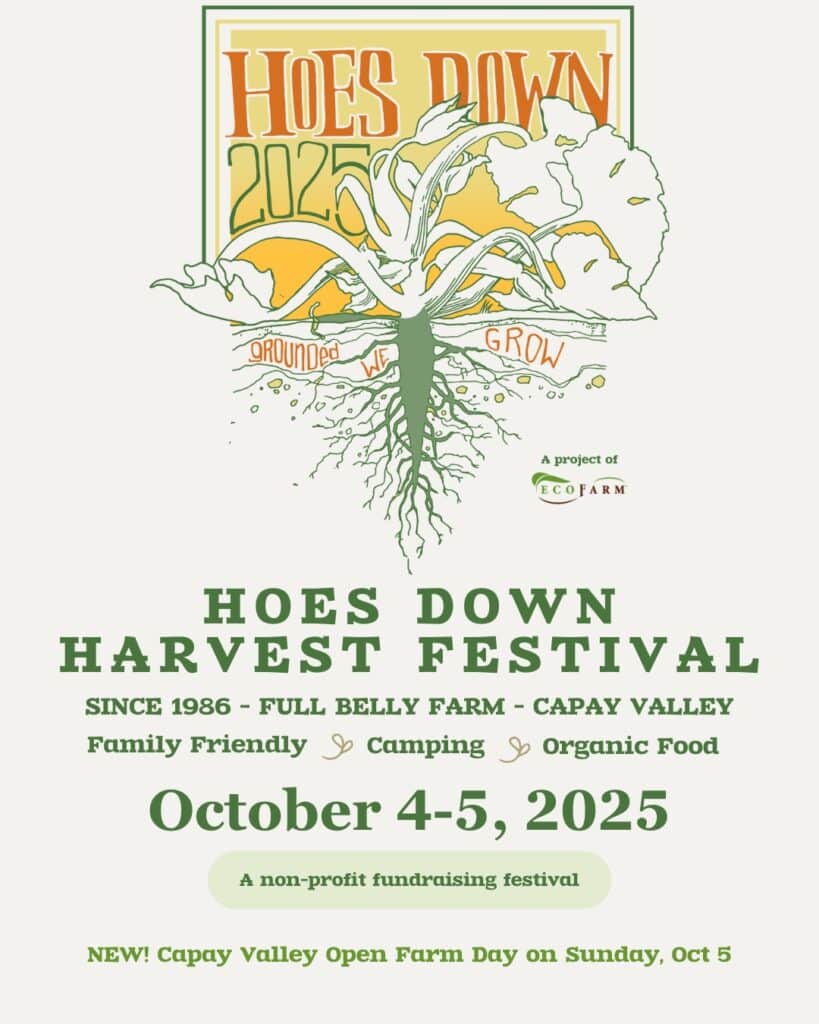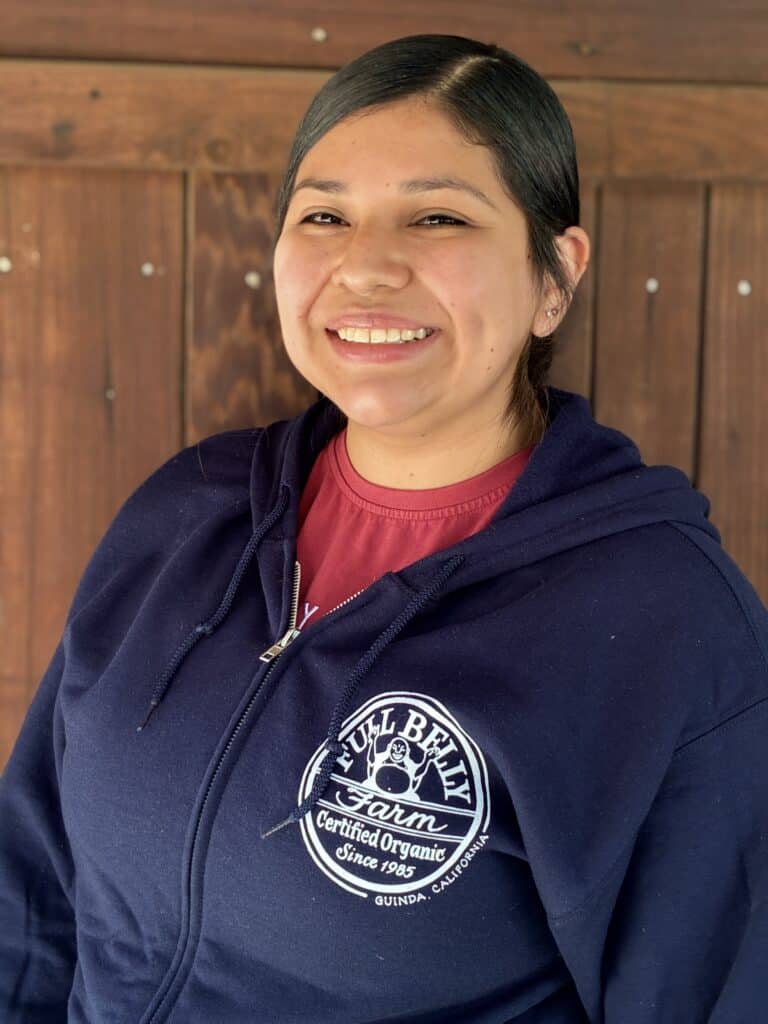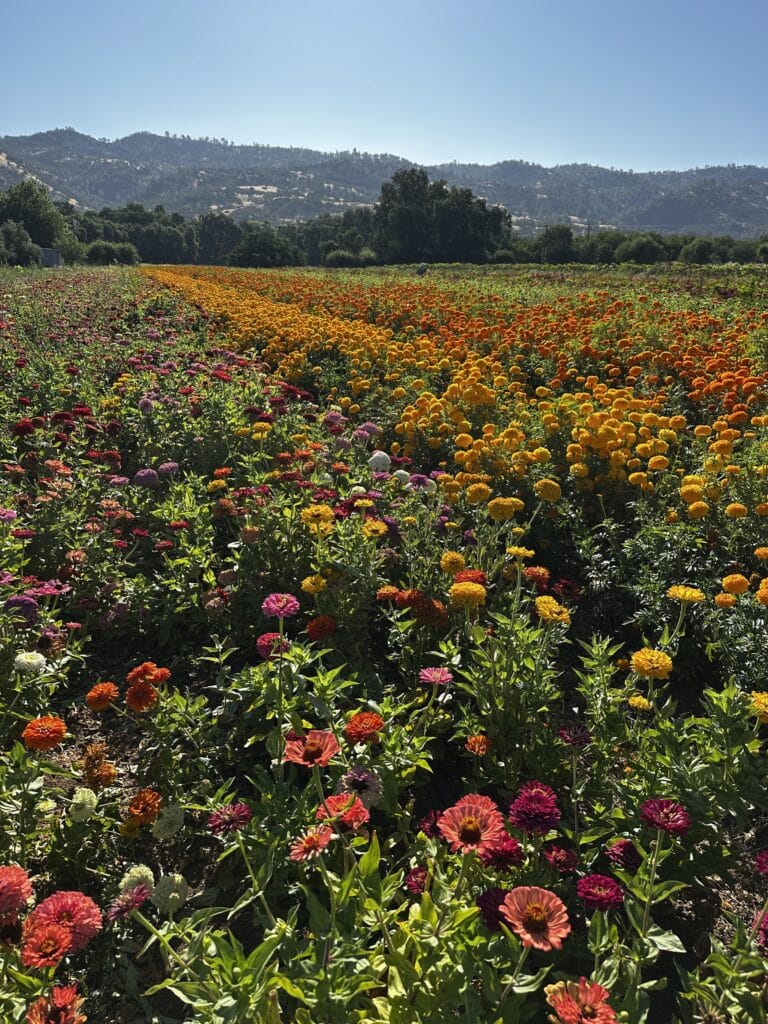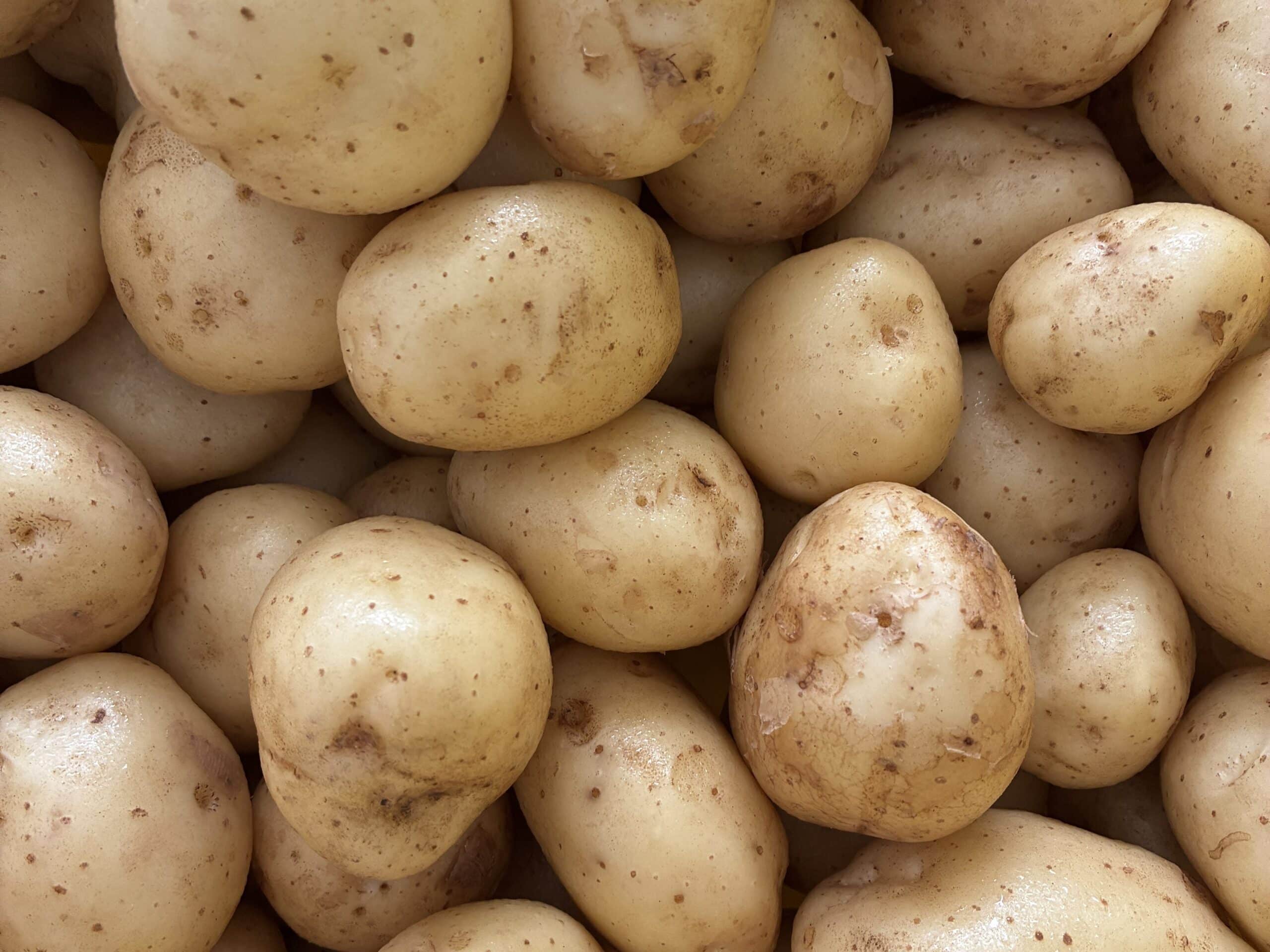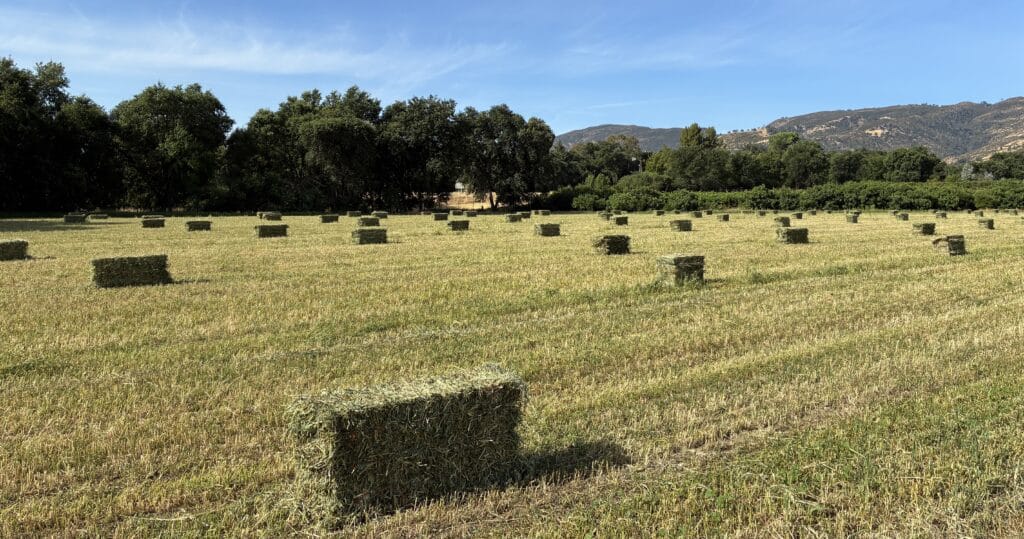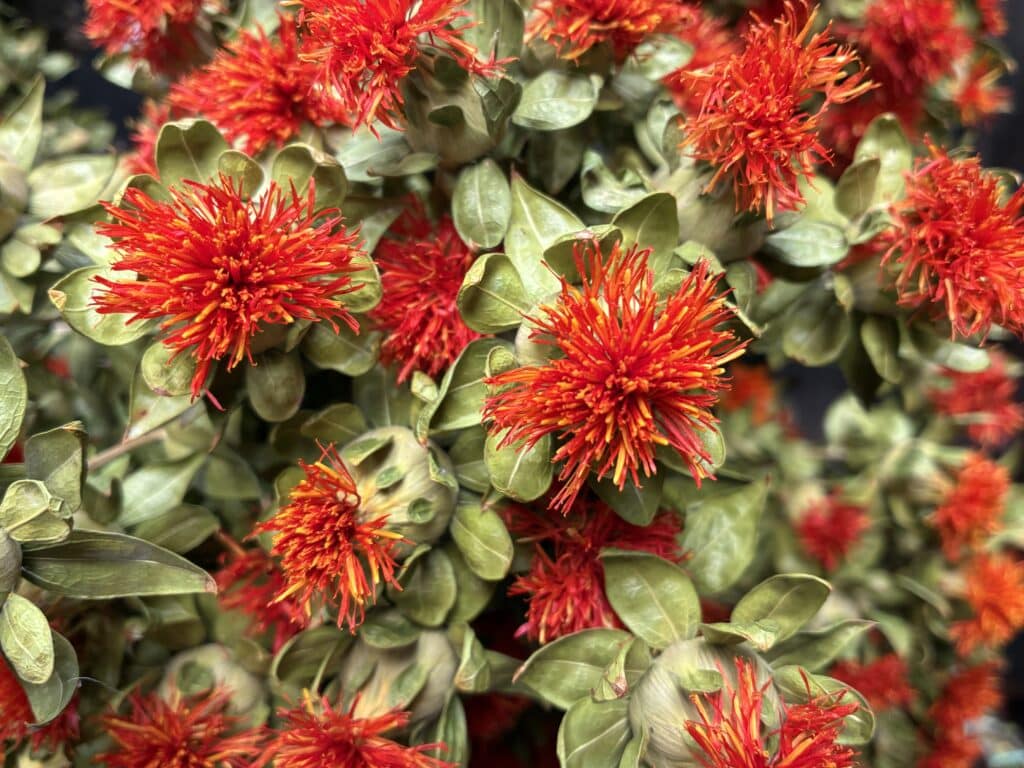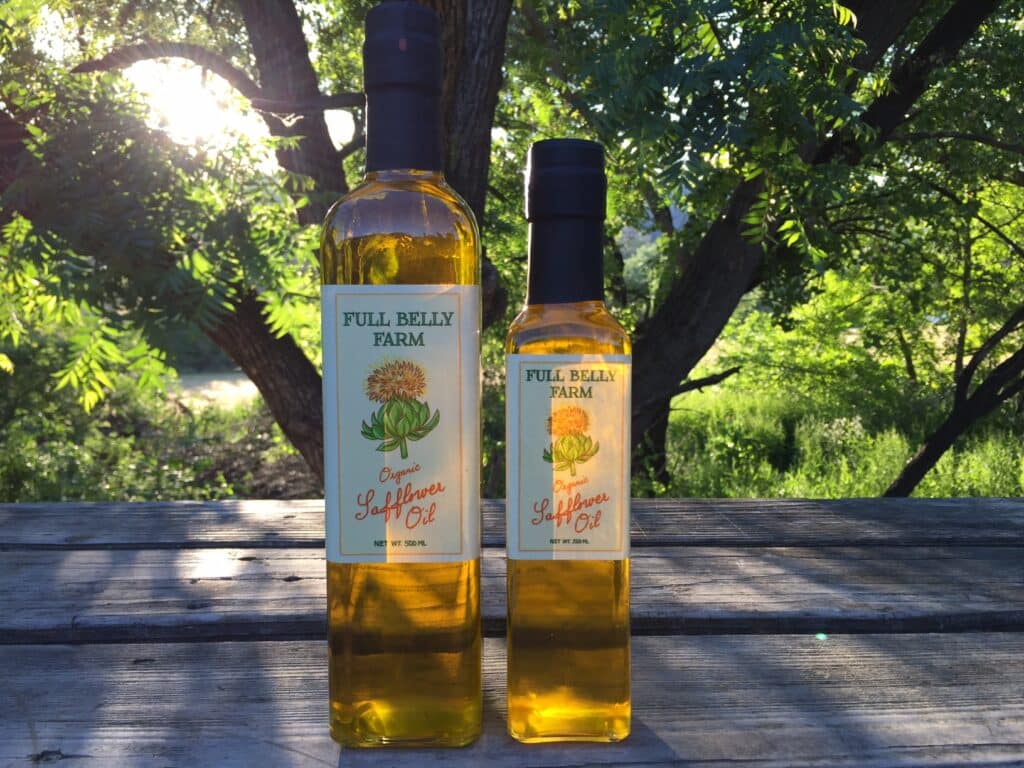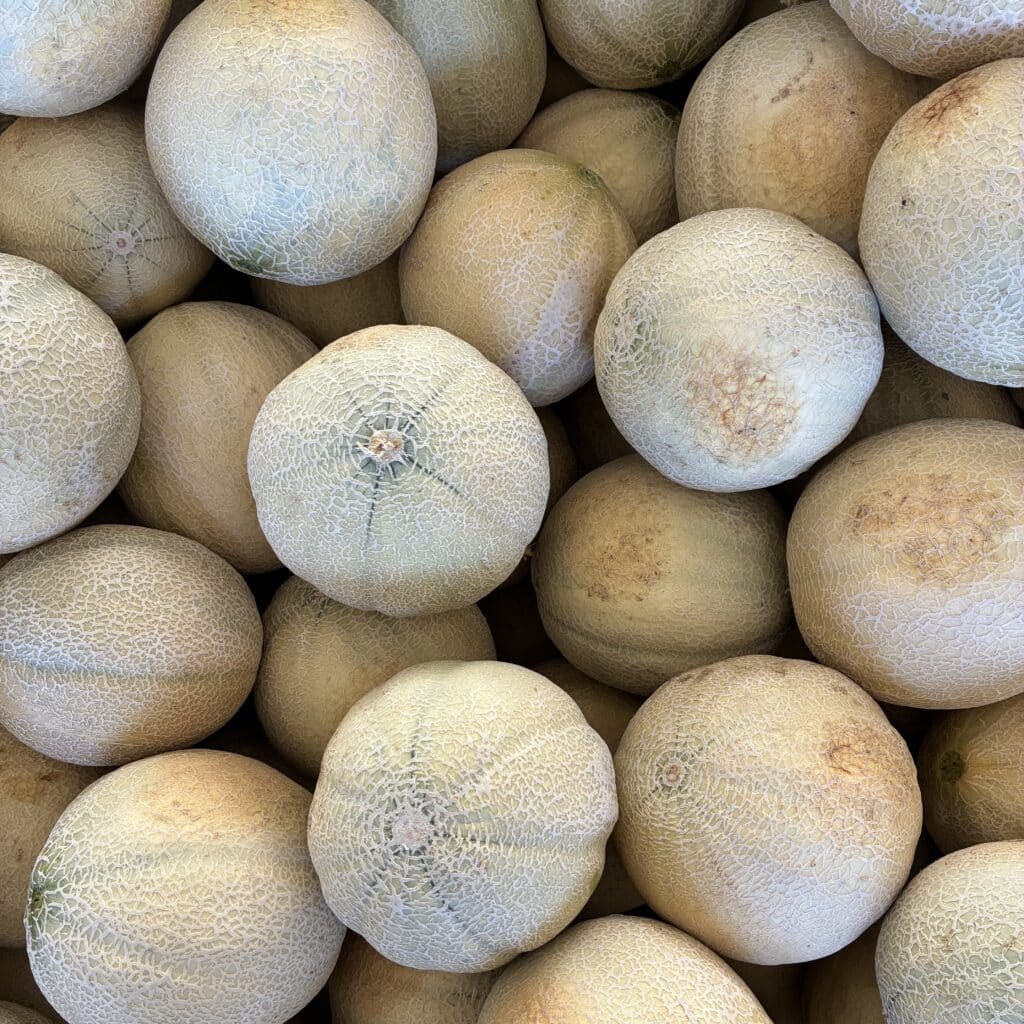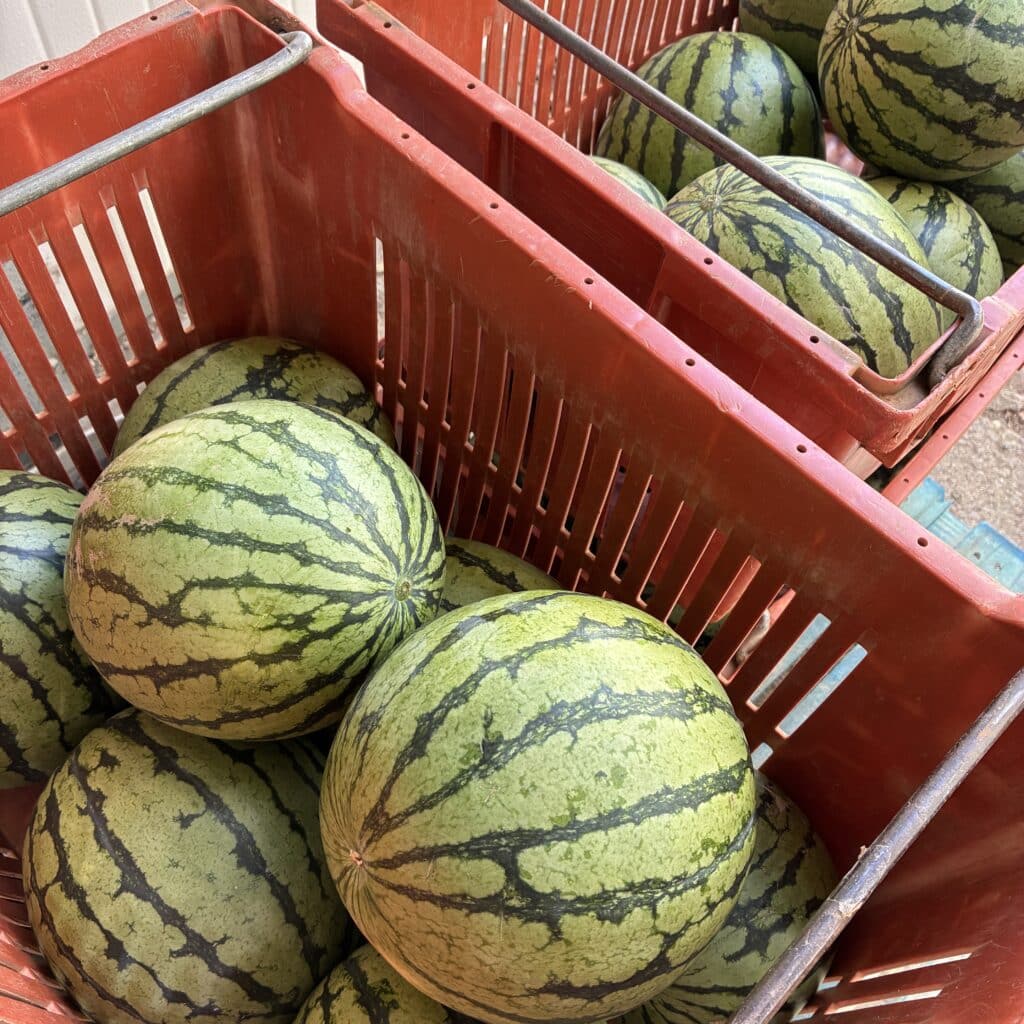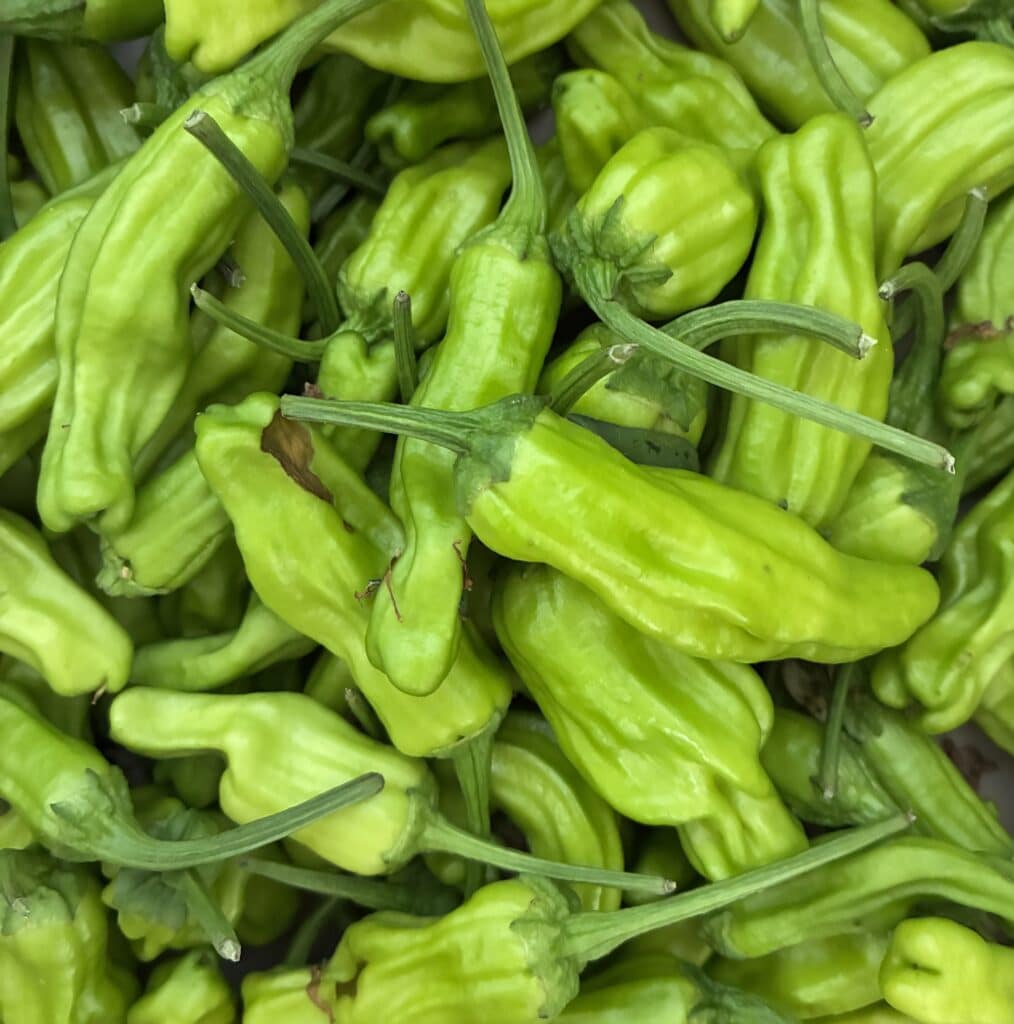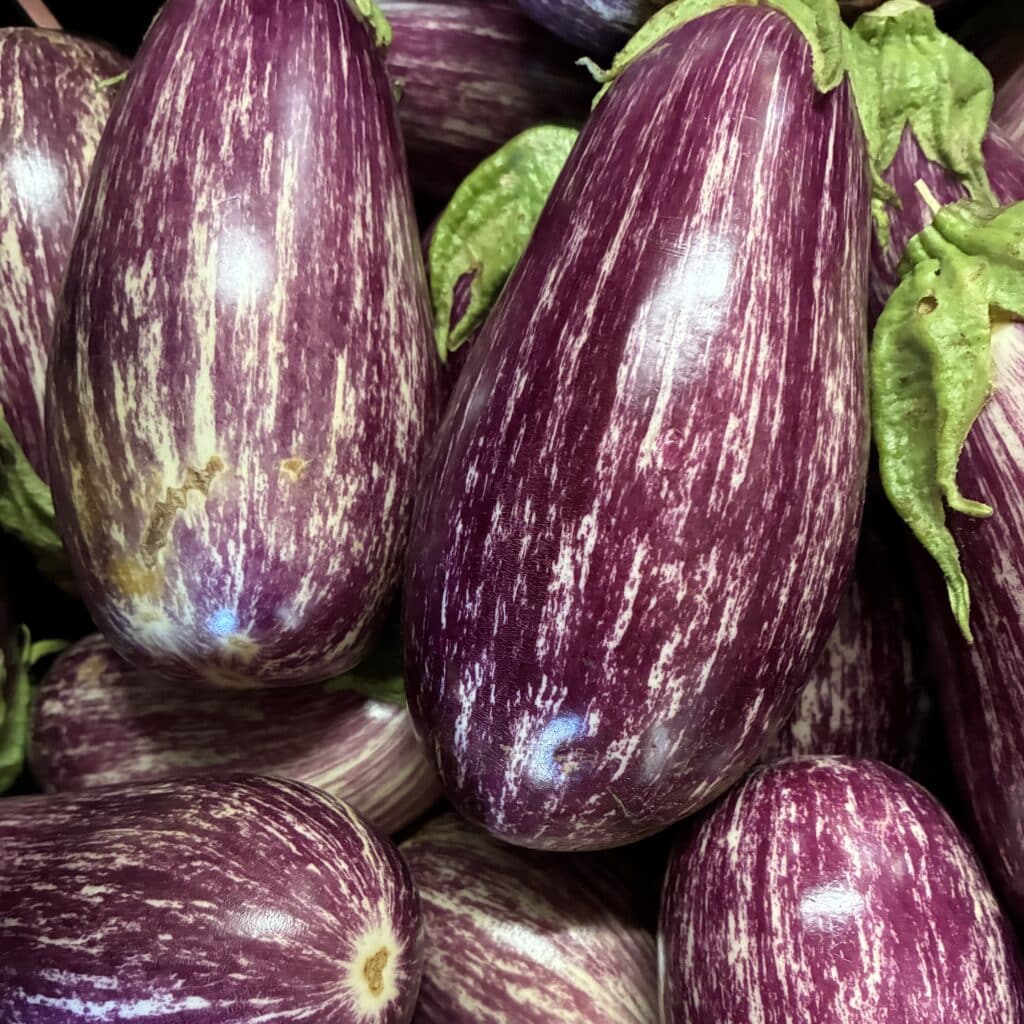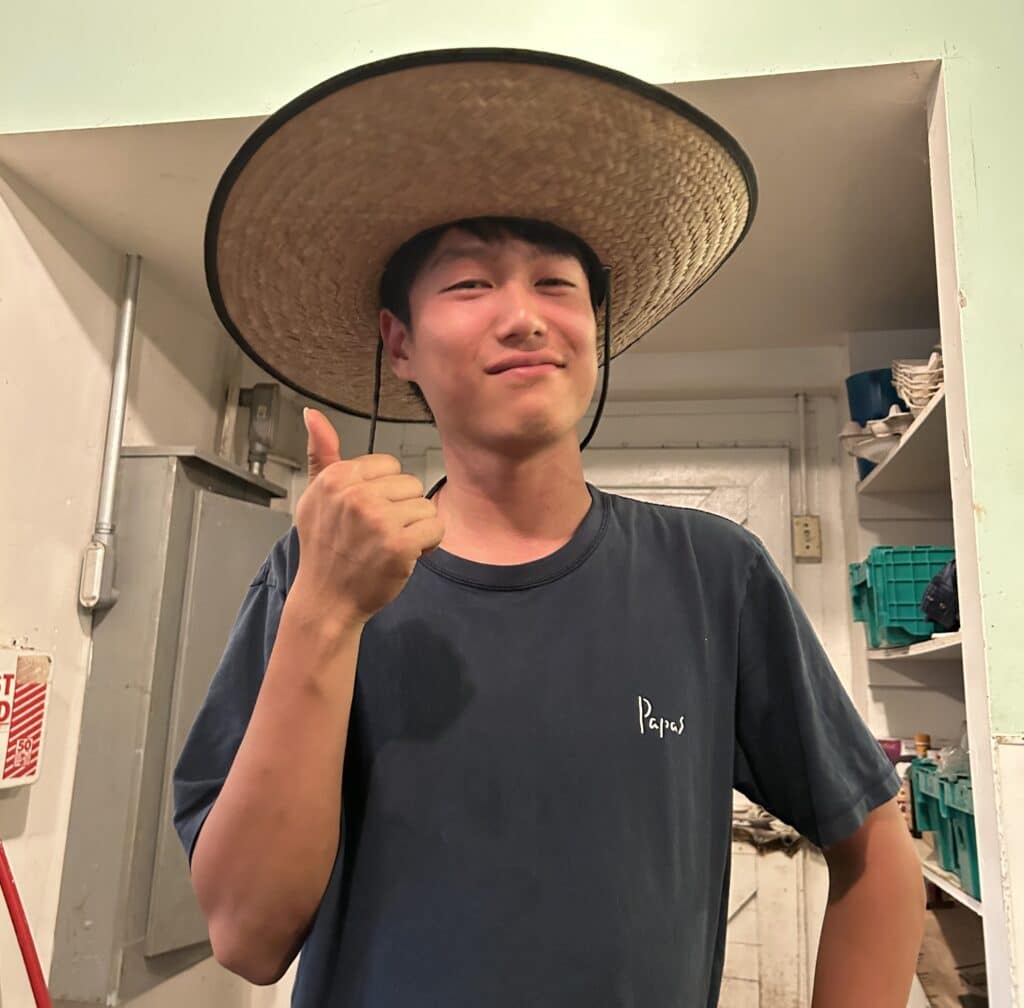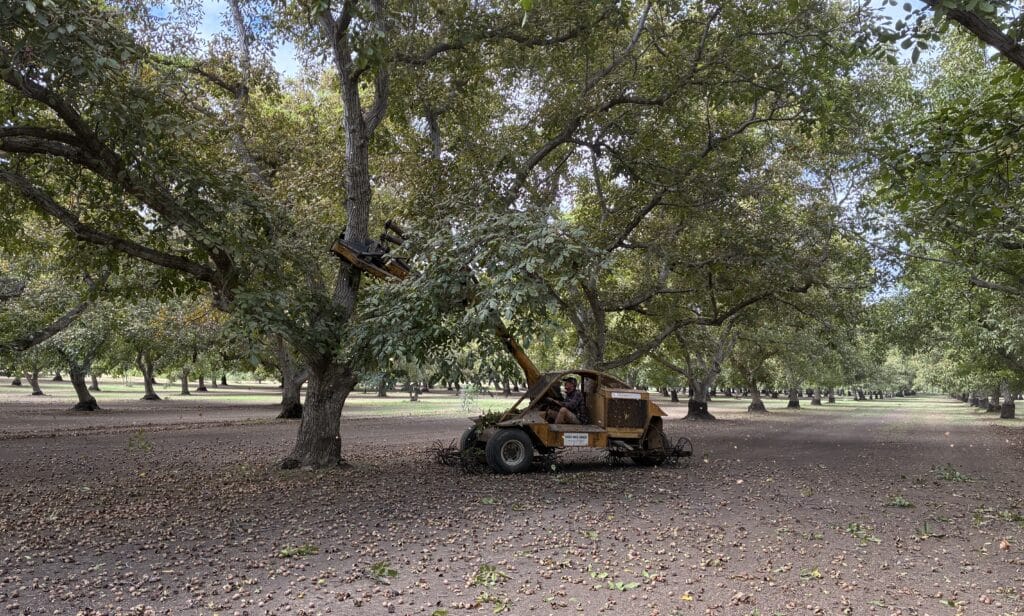
It’s fall and things are falling!
We got almost two inches of rain last Monday afternoon through Wednesday morning!
Temperatures have fallen too. Last week got a little cold, even into the high 40s at night. The remaining summer crops in the field don’t look too happy.
Then there’s the walnuts and tomatoes. Lots happening, some of which is captured in this video:
Here’s what you just saw:
Our walnuts were shaken off the tree (thanks Paul and Amon!), swept up, and trucked off to be hulled right before it rained. You can see a video of the shaker below and learn more about the sweeper and other walnut harvesting equipment here. The video is deceptive; especially on the bigger trees, it looks like the shaker barely moves them. As you can see, plenty of nuts are falling and if you’re standing near the machine, or you’re in a nearby building, the ground shakes! It also is incredibly dusty and loud.
Hulled walnuts go through the sheller (in the video), and then our sorting line so that all bits of shells and any bad walnuts are removed.
In the tomato field, the work of cutting the miles of twine and removing the stakes has begun. Thanks to the rain last week, the ground is too soft to use a tractor to pull the stakes, but soft enough for them to be pulled by hand, as demonstrated by Ellis!
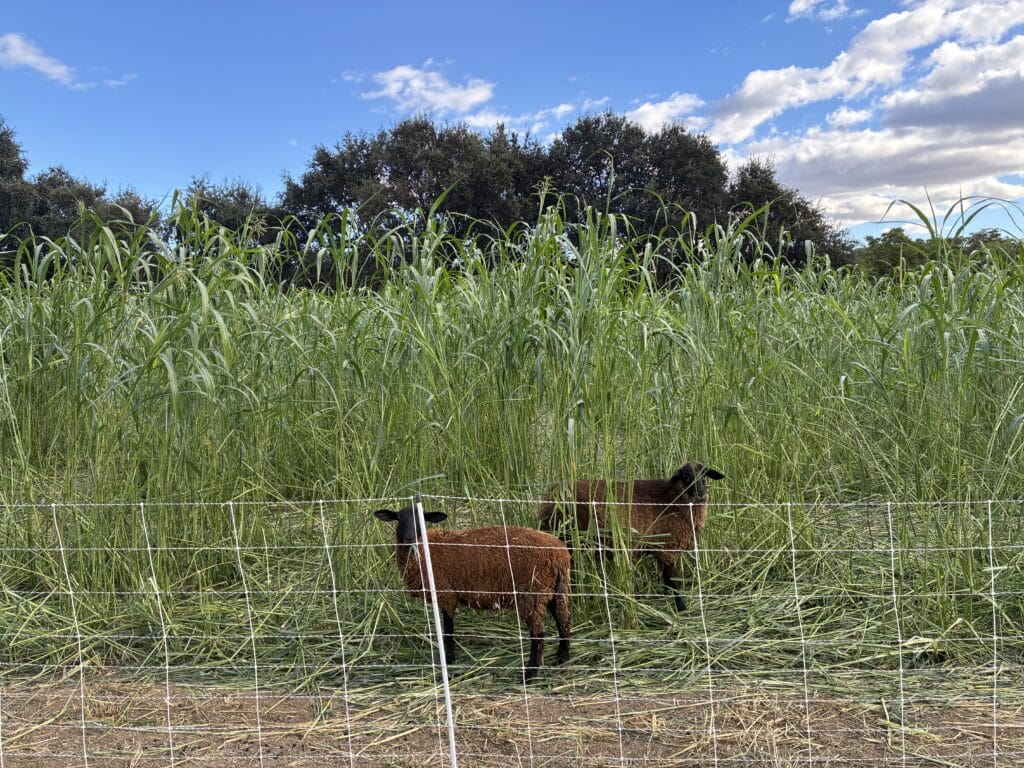
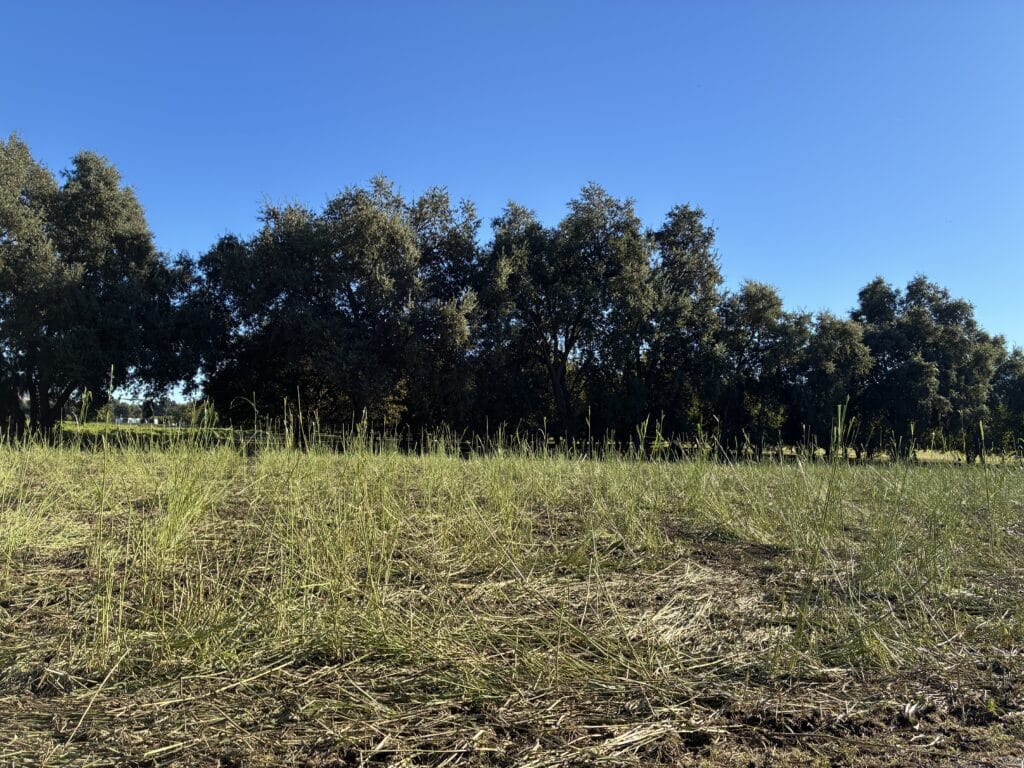
Also, the very tall (over 8 feet) Hoes Down sudan grass maze was masterfully decimated by a group of happy sheep and the pepper shade cloth (which you can see here) was taken down right before the rain. Their disappearance makes a noticeable change in the appearance of the farm. Soon enough, the leaves on the walnuts, peaches, figs, and other trees will fall and the farm will look very different from how it looks now. This seasonal transition comes with a sigh of relief as we head into a slower and quieter time of year.
Elaine Swiedler, CSA Manager
